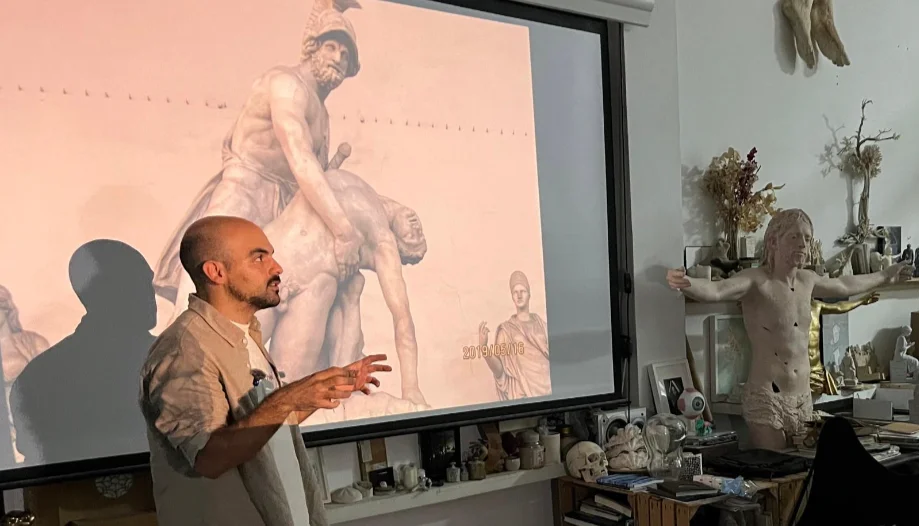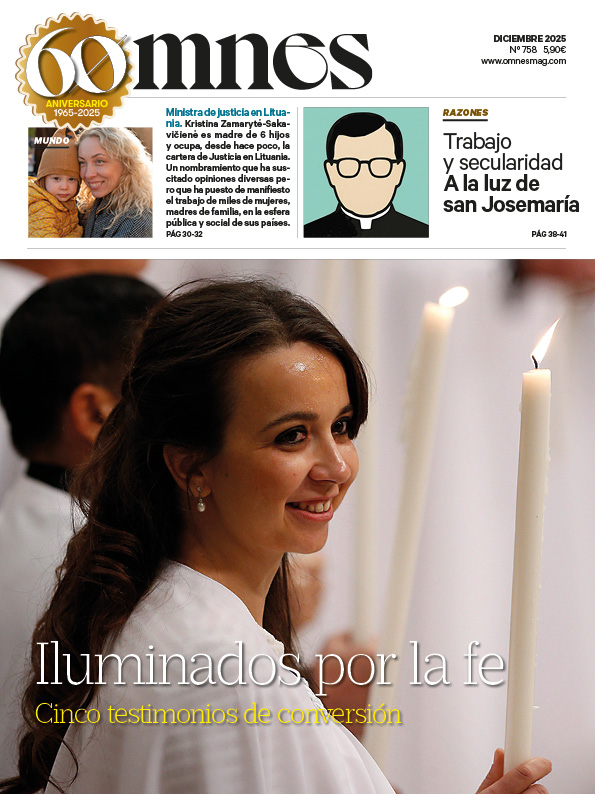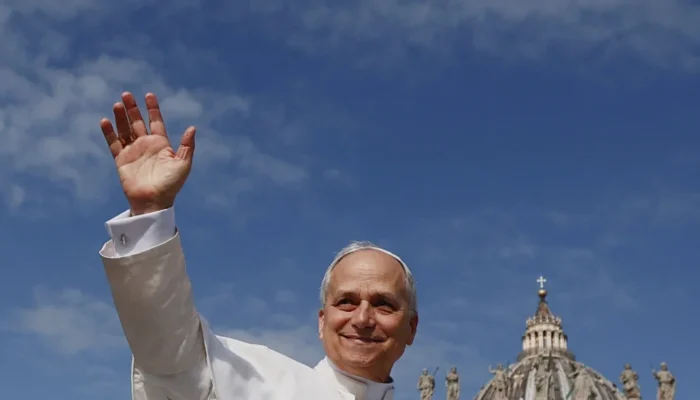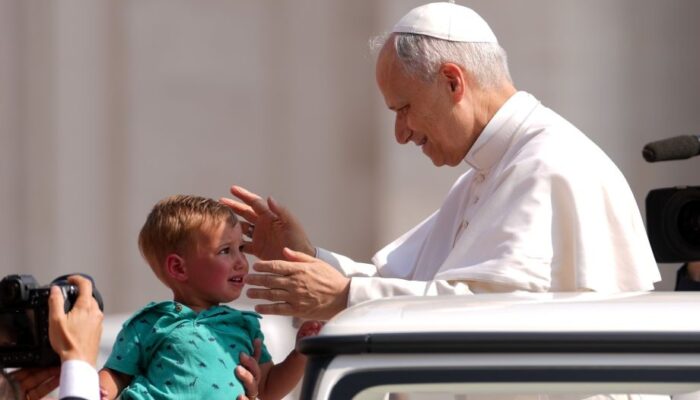Under the motto “Artists, carry beauty and bring it to the camp of men”, Abel de Jesús invited the attendees to contemplate art as a path of revelation, where beauty becomes a path to the divine.
The course, structured in four modules - Ars Credendi (faith), Ars Celebrandi (liturgy), Ars Vivendi (morals) and Ars Orandi (prayer) - proposes to rediscover the fundamental arts of the Christian through aesthetic language. The first trimester, led by Abel de Jesús, addresses themes such as creation and tribulation, expectation and revelation, the figure of Christ as the eternal man, charity as love, and the tree of life in the middle of the square.
Heralds of God
During the first session, held in the workshop of sculptor Javier Viver, Abel de Jesús reflected on the role of the artist in the contemporary world. For him, the artist is a herald of God: someone capable of perceiving the depth of the real and transmitting it to men through beauty. “The artist is the man carrying Beauty and bringing it to the camp of men,” he affirmed.
The theologian explained this idea by resorting to a powerful image taken from the “Iliad”: the scene in which Achilles rescues the lifeless body of his friend Patroclus, killed by Hector. Achilles, overcome by grief and love, carries the body of his companion back to the Greek camp. For Abel, this scene symbolizes the task of the artist: to carry the wounded beauty of the world, rescue it from the battlefield of pain and chaos, and bring it back to the heart of humanity. Art, then, is not an ornament, but an act of redemption.
The artist, he added, is the one who overcomes the temptation of materialism and manages to connect with the divine life. His work, then, is not only the fruit of talent, but an echo of a transcendent experience. “One listens to Tchaikovsky's «The Nutcracker» - said Abel - and says: here is God”.
Wounded by Beauty
The experience of beauty, according to the theologian, is not without suffering. “Man is wounded by the eternal,” he said, recalling that every human being carries within him a nostalgia for the absolute. That wound pushes us toward the search for the divine, but it also confronts us with our finitude. The experience of God is painful,“ he added, ”St. Teresa said: I die because I do not die. That mystical longing is finally reconciled with the everyday".
Mysticism, Abel said, is what God puts in the soul; asceticism, what man offers to dispose himself to God. However, he warned that the experience of the divine is not manipulable: “Beauty is unavailable. You don't know when you're going to experience a Stendhal syndrome. And when it happens, you are left breathless. It opens a wound: the wound of original sin.”.
The search for the ultimate
In one of the most profound reflections of the session, Abel de Jesús asked, “Who is God?” His answer pointed to the human desire for wholeness: “We believe in one God because our longing projects us toward an ultimate reality. We do not console ourselves with the penultimate, but with the ultimate.”.
He quoted Ortega y Gasset: “If the beloved leaves, the city is empty.” Thus he explained that authentic love seeks unity with the beloved. When that love is oriented toward God, the soul rises; when it remains in the earthly, it sinks. “It is not that God is insufficient,” he clarified, "but that our experiences of Him are ideological or superficial.
Abel urged artists to detach themselves from the human structures that often replace God, to live their own “dark night of the soul,” in the words of St. John of the Cross, and to search “deeper, in the thicket.” Only there, he said, are the joys and sorrows that do not come from God purified.
Creation as an act of love
“Creation is an act of love for another,” Abel explained. Love, like art, involves a tension between unity and otherness. “To be different, but to tend toward unity: that is the drama of love.” The theologian related this dynamic to the Trinity: the Father who loves, the Son who is loved, and the Holy Spirit who is the movement of love. “Love is realized in otherness and only in this way can it create.”.
From this point of view, the creation of the world is an expression of an overflowing love. In paradise, man lived reconciled with his body and with nature. Everything was in harmony. Sin, however, introduced the rupture: the beautiful creature became perishable, wounded. Even so, beauty retains its power of attraction, although it always refers us to something that transcends it. “Everything that is not rooted in God becomes insufficient,” the theologian reminded us.
Without God, beauty becomes hell
Abel also warned about the danger of a beauty detached from the divine. “Without God, beauty becomes hell,” he said, recalling 20th century attempts to replace religion with totalitarian ideologies. “Hitler had a fascist idea of beauty, and anything that did not conform to it was intolerable to him. When God is eliminated, beauty ceases to enlighten and becomes devouring.”.
He cited the cases of Nietzsche and Freud as examples of modern despair. “When one turns away from God,” he said, “one needs to fill the void with other things.” Today, that emptiness is disguised as hyperconnectedness, social networks or consumerism, when what the soul needs are "lamps of Truth that give light and warmth to the caverns of meaning.".
The artist as a juggler of desire
“The artist,” Abel concluded, "must be a juggler of desire that leads man toward the eternal, toward the unconditioned love of God the Creator." That mission, he insisted, is not optional: it demands total surrender, risk and fidelity to inner truth. His task is not to entertain, but to awaken.
The training continues. If you would like to join the next session of the course -Expectation and Disclosure, by Abel de Jesús - you can see the information here.
Journalist and poet.







